This is an authorized translation in English of a post in French by @terresco: De Cape Town à Mombasa, 3 mois, 8 pays, 12 500 km – Le Botswana
Remember that the person who speaks here is NOT me, Vincent Celier (@vcelier), but @terresco, a French guy.
Botswana
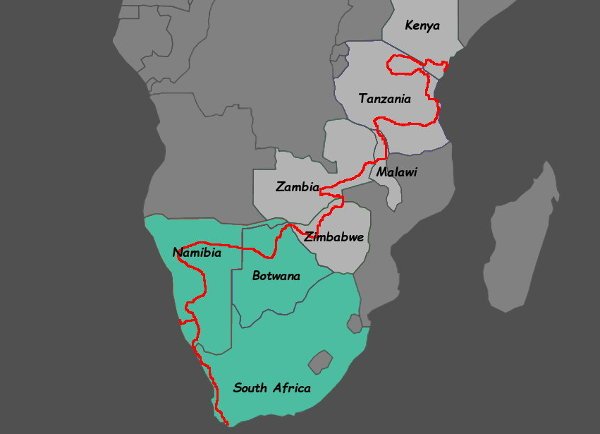
It is by one of these forgotten tracks which cross Africa that we reach Botswana. The border post had forgotten to open, they did not expect to have customers. With a little patience and diplomacy, everything always works out. The biggest problem was that the ink for the ink pad had dried out, but we had planned for that. It took us a long but pleasant time to cross this border, but it changes from the tense and infernal lines that one finds in general.
Botswana is mostly a wide desert, the Kalahari, which covers almost 70% of its surface. But in the north the Okavango River forms a huge interior delta, refuge from a spectacular wild life. Higher still, the Chobe National Park is a diamond of nature in its pure state, inhabited by a prodigious amount of animals that move freely.
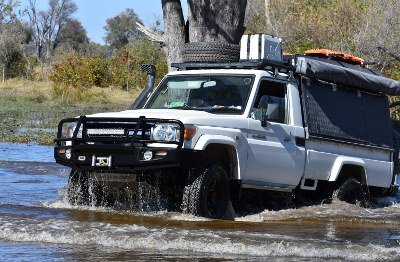
Populated by two million inhabitants it is one of the least dense in the world, here space is king and it's good. It is considered to be the least corrupt country in Africa and has had one of the largest economic growth in the last 20 years. Do not start to imagine Switzerland, Botswana started from low to very low, from the group of the poorest countries in the world to be precise. Diamond plays a major economic role, but for the northern part, that we propose to cross the tourism is becoming more and more a source of income.
The Okavango Delta, a marvel of African nature
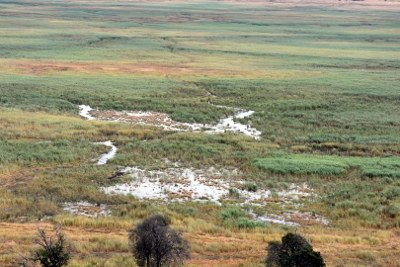
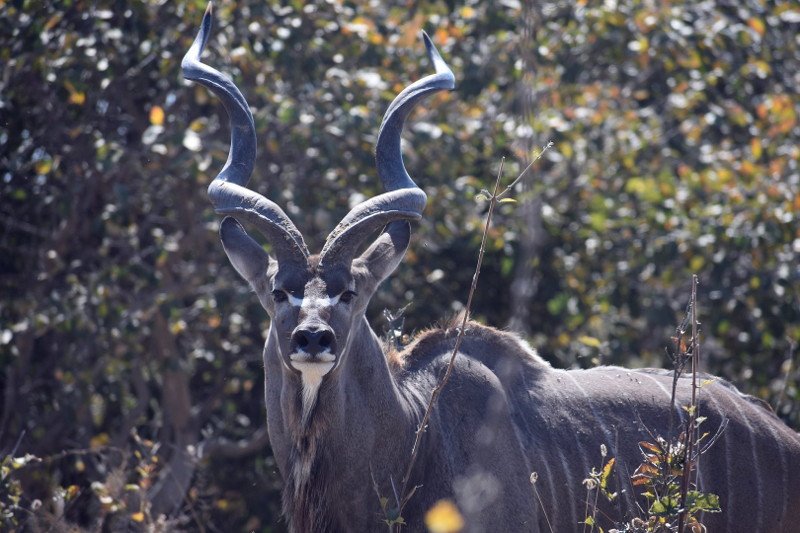
The big male kudu, one of the most beautiful antelope for my taste. Pretty scared one can rarely observe it for a long time.
Some say that the river disappears into underground caves, but in fact the water rises at certain times, twice a year, probably corresponding to rainy seasons upstream, and evaporates with high temperatures. This creates cycles according to which one island or the other will appear or disappear. Animals too change their behavior to adapt to variations in this shifting environment.
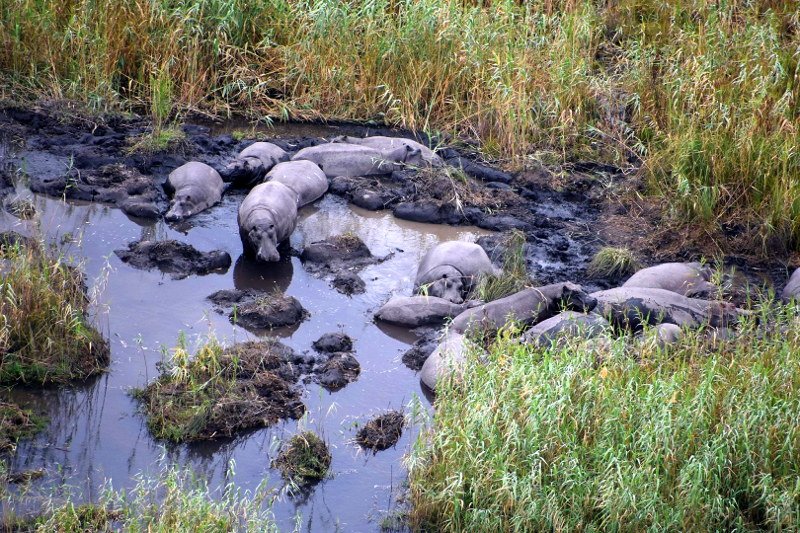
Hippos spend their day in the water because their skin is sensitive to the sun. The dominant male of the group is polygamous and irascible, the hippopotamus is dangerous and feared in Africa
Obviously if you want to leave the main tracks it is not always easy, the Okavango is a big swamp you have to be careful. A fantastic way is to rent a small boat and go spend a few hours on random canals, do not forget the GPS because if leaving is easy, return is sometimes difficult. You must be careful not to disturb the hippopotamus, considered the most dangerous animal in Africa, as they are numerous in the delta. Elephants offer in summer, the spectacle of crossing a canal. In winter only the oldest are left, those whose teeth are too worn to eat and who feed on papyrus that are very tender and have a pleasant sweet taste.

Kingfisher in the reeds of the Okavango. Beautiful colors but not easy to photograph! More than 400 birds inhabit the delta.
We must resign ourselves to leave the Okavango because time flies and our autonomy, although important, is not unlimited. Other wonders remain to be discovered before reaching Kasane, all the way north. Kasane, crossing borders between 4 countries, Botswana, Namibia, Zimbabwe and Zambia. But before that we will find again the sand and we will meet wild life that is becoming our daily life.
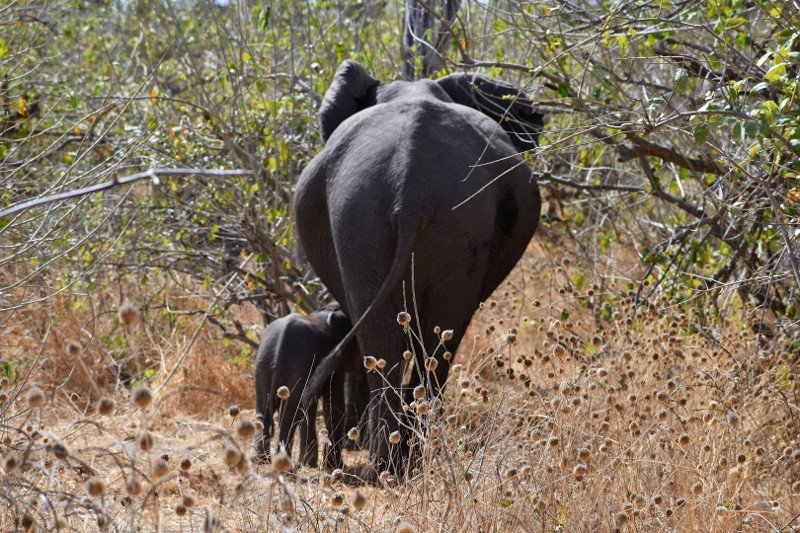
Chobe National Park
If the Okavango made me dream for a long time, thanks to National Geographic, I had never heard of Chobe. And yet ... it is one of the places where the fauna is the most dense. When you have to get out of the car to deflate the tires or get out of the car, you have to put someone on the roof to monitor the surroundings. It's amazing the difference between seeing an elephant from inside the car or from outside, it feels small, especially when he starts to move his ears, showing that he is a little nervous.
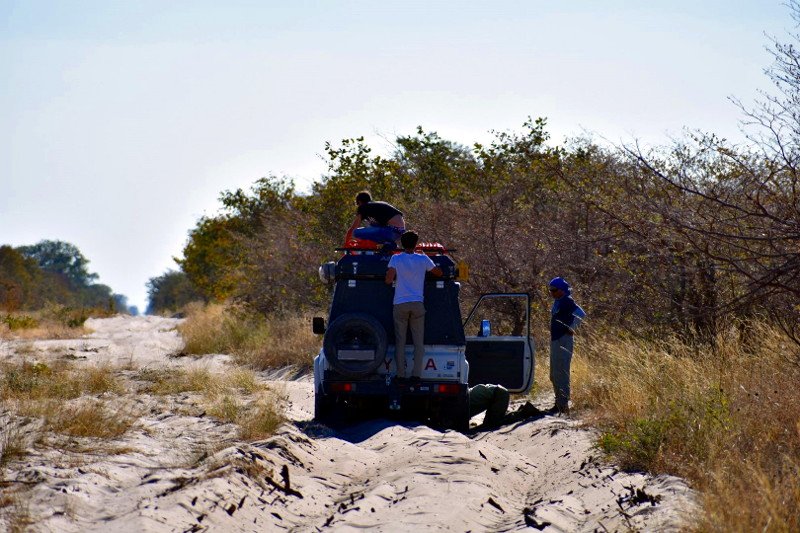
Two elephants cut the track to my friend who had to stop. It must be sanded but the elephant family is still very close
This magical place is, as often, born of some dramas. In the 1960s all populations were displaced to protect this impressive ecosystem. In fact, there is cohabitation between animals and humans as in the Okavango, this is a place only for animals. There is no maintenance of the infrastructure, the existing tracks are those of the early explorers at the beginning of the century, maintained by the passage of visitors. When you go to areas outside the main tracks, you may well regret it, but the difficulties of the track only add to the pleasure of discovery.

Very rare to see a leopard during the day, this one had just killed an impala and was quietly eating it
In Chobe as in Okavango, accommodation is extremely expensive. Botswana is betting on luxury tourism, what they call "exclusive"; in plain language it means very expensive. You have to be clever and imaginative. A good thing for example is to arrive late. With a little talk and one or two beers that just had at the bottom of your fridge, the guards may let you sleep for free. Beware of animals, the night is really dangerous, you have to stay around cars, make a fire if it is possible and especially have powerful lamps and check every two or three minutes if a few eyes made shiny by your lamp are getting close.
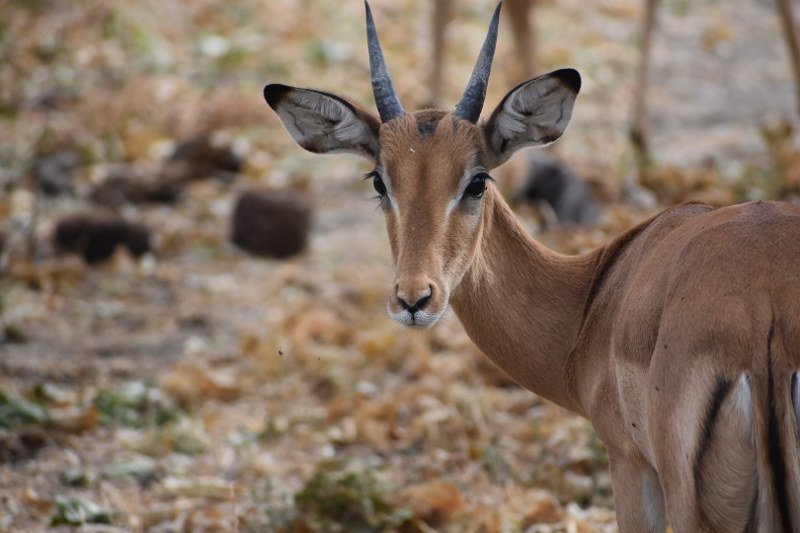
We find the civilization again when we arrive at Kasane, the last kilometres are easy because we find a beautiful paved road. Kasane is a very small town by the river, but rather nice, for my taste. There are some nice tourist facilities after two weeks of bush. Many agencies offer a day at Victoria Falls, in Zimbabwe, from here. There are even some animals walking around town, which I have rarely seen elsewhere.
It will take time to replenish, repair the wheels and other small equipments, enjoy a little evening or two in a bar before heading to Zimbabwe. Unlike previous countries, with the notable exception of the Victoria Falls area where we will begin, tourism is very underdeveloped in Zimbabwe. More than ever, the challenge will be autonomy as our friend will leave us in Victoria Falls to go back to Cape Town and it will be only my wife and I with only one car. No more possibility of towing with the second vehicle in hard times.

-- @terresco
Africa, the long crossing
From Cape Town to Mombasa: South Africa
From Cape Town to Mombasa: Namibia
